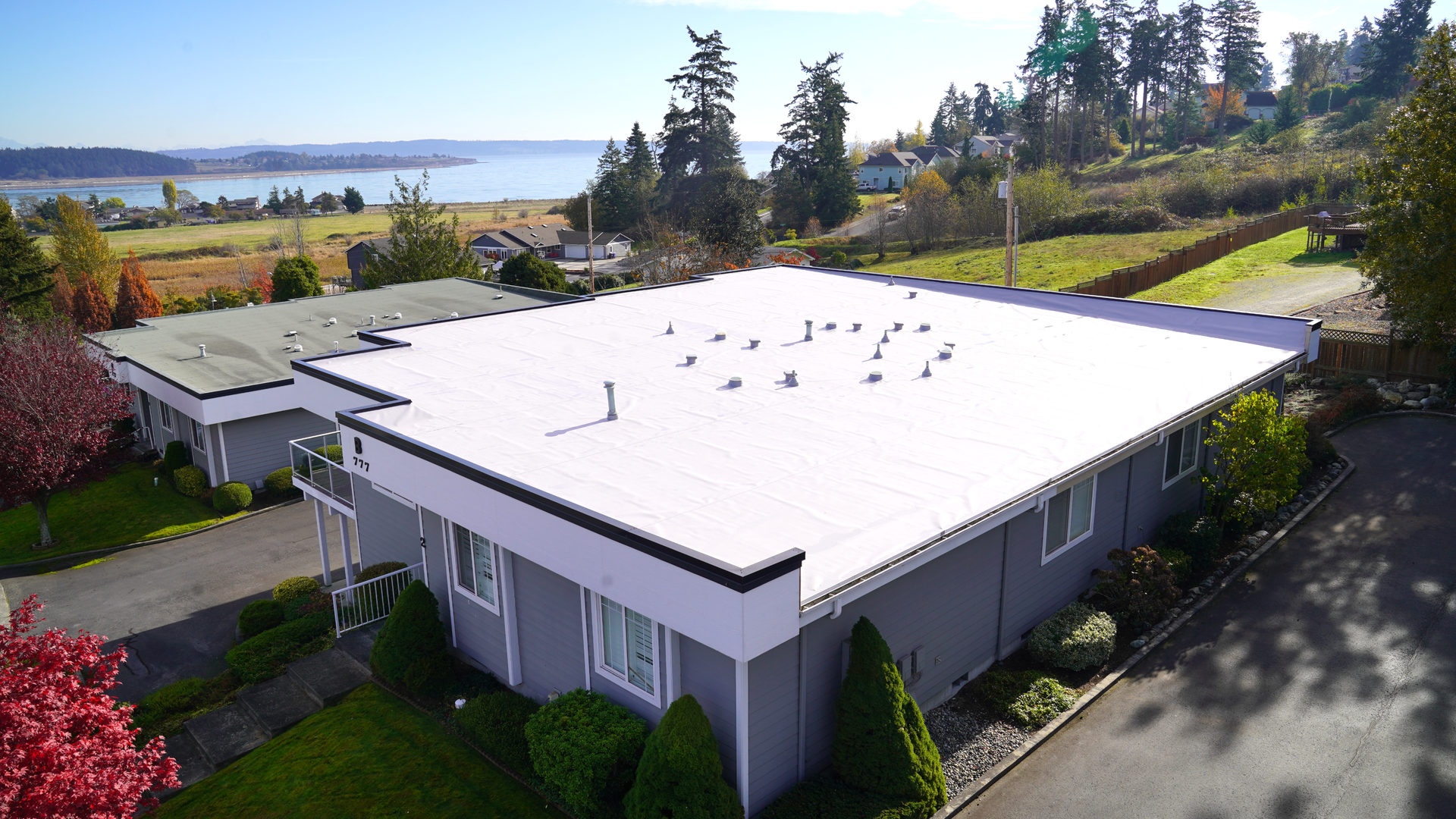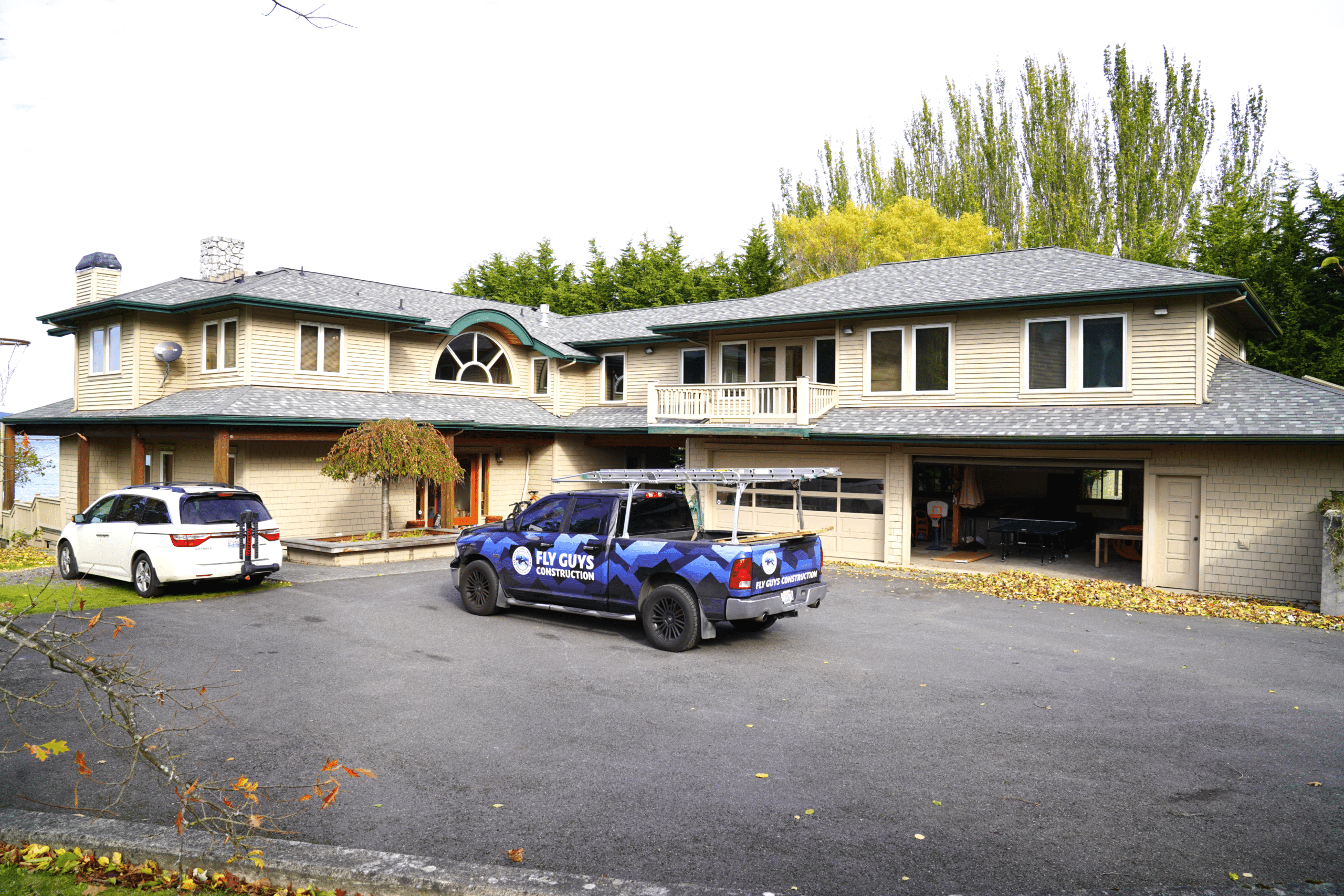Blog
Blog

May 11, 2021
A flat roof has a lifespan of 10 to 20 years before it needs to be replaced. But two homes in the same area and with the exact same type of flat roof will not necessarily experience identical roof longevity. How long your flat roof remains in good condition is dependent on the quality of maintenance. It may be tempting to skimp on the cost of flat roof maintenance but this only compounds any roof problems there are. Spending money on flat roof maintenance today saves you plenty of cash in the long run and delays the need for roof replacement. Pros and Cons of a Flat Roof Flat roofs have their perks and drawbacks. Pros Inexpensive – The surface area of a flat roof is smaller than other types of roofs. They need less building material. Also, you do not have to pay much attention to curb appeal. This makes flat roofs generally less expensive. Faster Construction – The simpler style of flat roofs makes their construction period shorter than pitched roofs. Accessibility – There’s a lower risk of falling from a flat roof than a pitched roof. Access is easier. Cleanups such as getting rid of moss, mold, algae, stain,s and debris, can be executed with greater ease. Versatility – You can transform a flat roof into a rooftop garden or roof-deck. Modern Look – Flat roofs have a more contemporary appearance than traditional pitched roofs. Energy Efficient – Flat roofs are less punitive to home utility costs. Pitched/sloped roofs may allow cooled air to escape or trap unwanted warm air. A flat roof minimizes the overhead space that causes the accumulation of stagnant air. Cons More Maintenance Work – Flat roofs require more maintenance work on average than pitched roofs. Decreased Stability with Larger Surface Area – The stability of a flat roof diminishes with an increase in surface area. Large buildings have to find a way of compensating for the weight within the building design. Less Effective Drainage – A flat roof is not absolutely flat. It has a very low pitch (10 percent or less) to allow the draining of water. Still, flat roofs are generally not as effective at getting rid of rainwater as pitched roofs. Ponding can be an issue. This can be dangerous in the winter where there may be a buildup of snow and ice. Shorter Lifespan –Pitched roofs tend to last longer than flat roofs, which typically have to be replaced within a much shorter period. One of the reasons for this is the rolled roof materials used for flat roof construction such as EPDM, TPO, bitumen, and rubber. Challenging Sealing – Sealing a flat roof from water ingress can be problematic if not executed by a skilled professional. Expensive Repairs – Repairing flat roofs generally costs more than pitched roofs. Less Indoor Living Space – There is no room for an attic or loft. Flat Roof Maintenance Tips Work with a Professional Without the right preplanning and a professional contractor, flat roof maintenance can turn disastrous. A professional will evaluate your flat roof, establish what needs to be done, and guide you in making an informed decision on maintenance. Look for a roofing specialist with experience in flat roofing. Inspect the Roof Semiannually A flat roof should be inspected at least twice a year. This should preferably occur in the spring and fall. The inspection should encompass the clearance of dirt, debris, and leaves to allow proper drainage and minimize deterioration. Clearing the dirt and debris ensures a clearer view of the roof surface, a key prerequisite for picking up any early signs of failure. Check for Signs of Stress Flat roofs are susceptible to undue stress or pressure from too much weight. This may be due to ponding, ice, snow, heavy equipment, or roof gardens. Left unchecked, the stress could cause roof collapse leading to extensive roof and building damage. Check for signs of stress and find out from a roofing contractor the maximum recommended weight your roof can handle. Check for Ridges, Cracks, and Blisters Large ridges and cracks may occur following surface stress, freeze-thaw conditions, and poor workmanship. Blisters form when moisture or air is trapped within roof layers thereby damaging the roof membrane and separating layers. For metal roofs, check for damage where seams are fastened. Heat could cause screws to become loose, overtightened, or missing. Check for rust spots where the screws go. Larger cracks tend to form along roof joints or seams and may require a professional contractor to repair them. Working with a reliable roofing company will ensure that your flat roof is properly cared for to prevent future issues. Get Rid of Debris Flat roofs are more prone to the accumulation of debris including twigs, leaves, and dirt. These become a moisture trap that leads to algae, and mold, potentially compromising the roof’s integrity. Clean out dirt and debris regularly. Trim Surrounding Trees Overhanging tree branches can be a major cause of roof debris. By trimming tree branches, you reduce the number of times you have to get rid of debris build-up. You could probably do minor tree trimming on your own. Where there’s a risk of you or a large tree branch falling on the roof, it’s best that you have a professional do it. Check the Drainage Flat roofs are at greater risk of ponding. Ponding can cause leaks, structural damage, and, in the worst case, roof failure. That would usually happen when the drainage design is poor. To prevent this, get rid of any ponding water and schedule regular maintenance. Sections with pooling may require additional leveling in order for the water to more easily find its way into the drainage. Also, check the drainage system itself to confirm that it is not clogged as this too could cause a backup that results in pooling. Gutters and drains ought to be cleaned at least twice a year. Snow Removal Heavy snowfall can cause damage to the best maintained flat roofs. It may lead to joint stress, leaks, and even roof collapse. As much as possible, snow should be removed from a flat roof before it is one-foot deep. Repair Leaks Quickly Like any other type of roof, flat roofs are prone to leaks. Cracks and other structural problems could create leaks on a flat roof especially along the seams. As would ponding water that is left too long without being drained. When it comes to leaks, time is of the essence. The faster you detect and repair a leak, the less expensive fixing the problem will be. If you notice the early signs of a leak, do not ignore it. Repair it quickly before things spiral out of control. Use a UV Treatment The sun can cause a lot of damage over time, especially on flat roofs. Work with a professional to determine the best UV treatment to protect your roof from the sun's harmful rays. Regular treatments can help dramatically increase the lifespan of your flat roof. Getting a Professional Evaluation There is no perfect type of roof. A flat roof may be your preferred roofing type and it could very well be the best option. For it to meet your functional and aesthetic requirements over the long term, proper maintenance is fundamental. Contact the roofing experts at Fly Guys to determine the maintenance work that is most appropriate for your flat roof type and building location.
Request a Free On-Site Estimate

Address:
512 Guard St Unit D
Friday Harbor, WA 98250
Contractor’s License #: FLYGUGC805K1
The content on this website is owned by us and our licensors. Do not copy any content (including images) without our consent | Fly Guys Construction
© 2025
